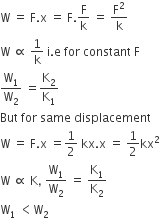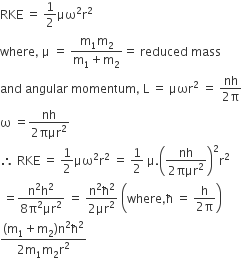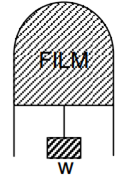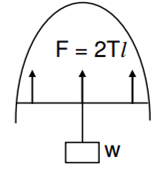This question has statement 1 and statement 2. Of the four choices given after the statements, choose the one that best describes the two statements.
If two springs S1 and S2 of force constants k1 and k2, respectively, are stretched by the same force, it is found that more work is done on spring S1 than on spring S2.
Statement 1: If stretched by the same amount, work done on S1, will be more than that on S2
Statement 2 : k1 < k2
-
Statement 1 is false, Statement 2 is true
-
Statement 1 is true, Statement 2 is false
-
Statement 1 is true, Statement 2 is the correct explanation for statement 1
-
Statement 1 is true, Statement 2 is true, Statement 2 is not the correct explanation for statement 1.
Solution
Multi-choise Question
A.
Statement 1 is false, Statement 2 is true
As no relation between k1 and k2 is given in the question, that is why nothing can be predicted about the statement I. But as in Statment II. k1<k2
Then, for same force















